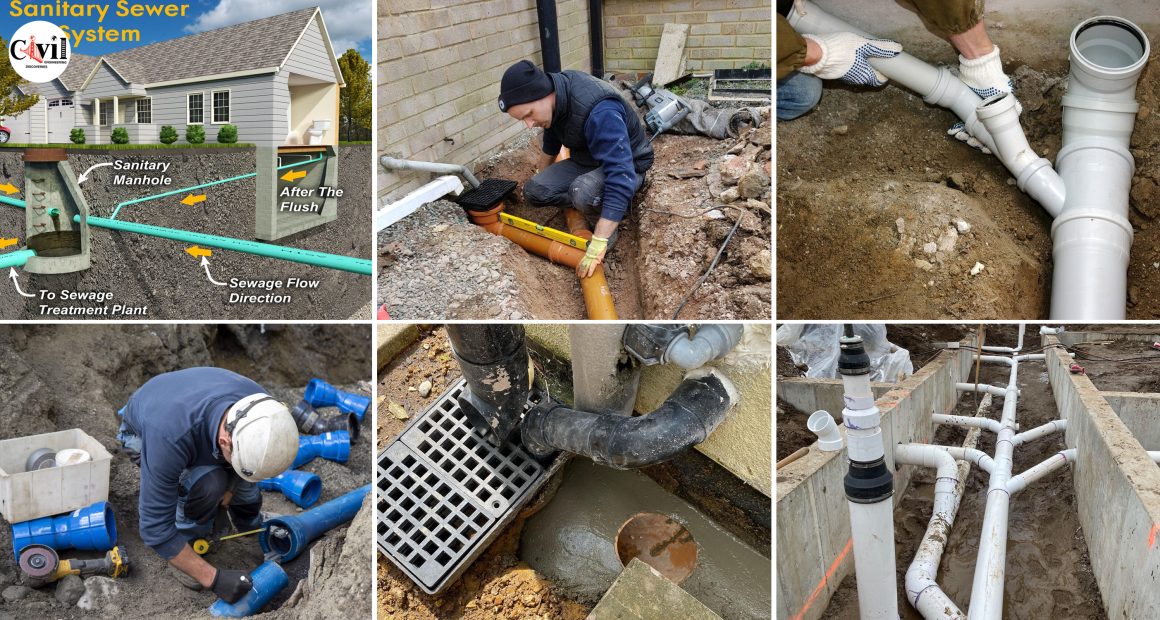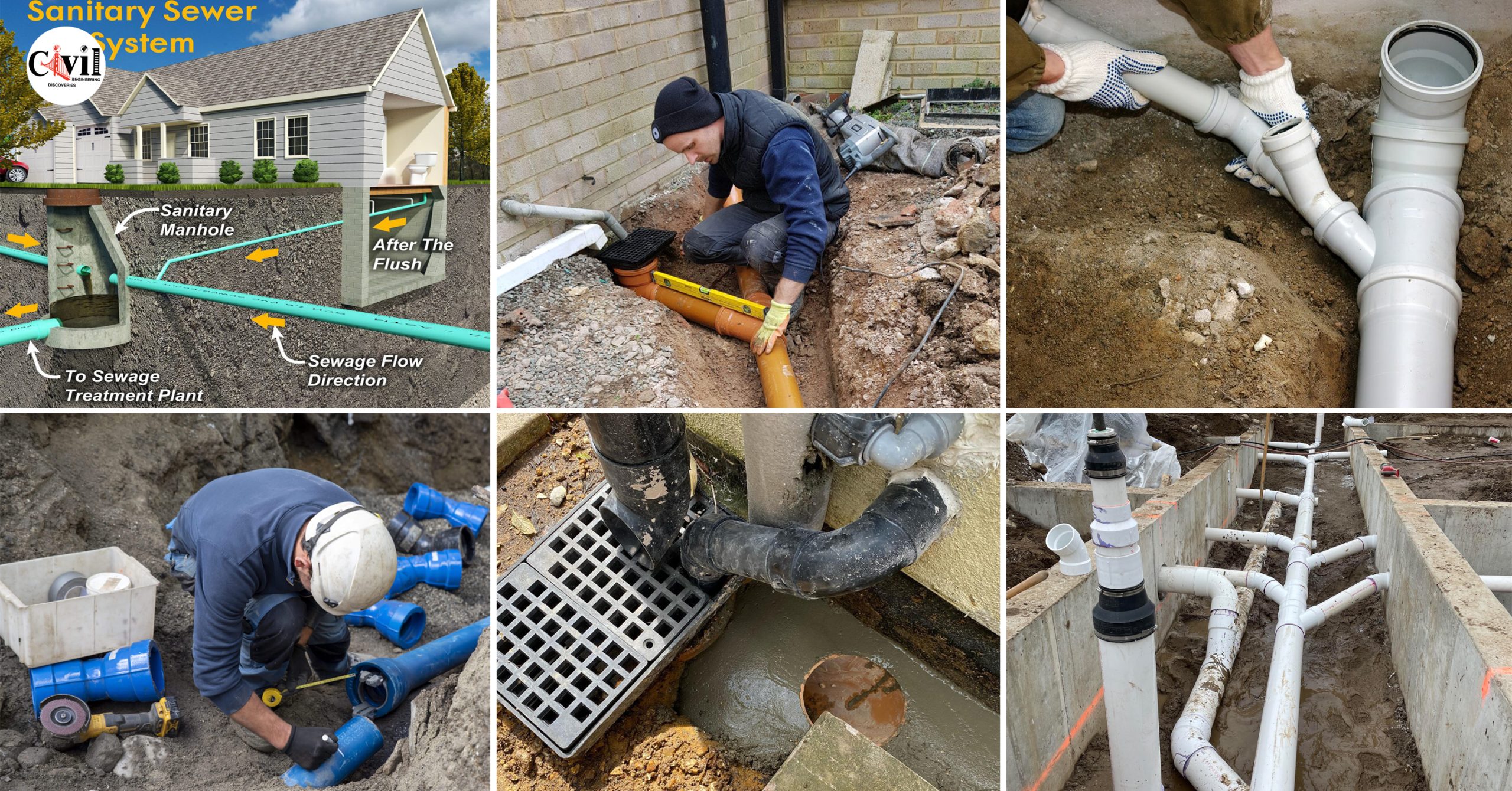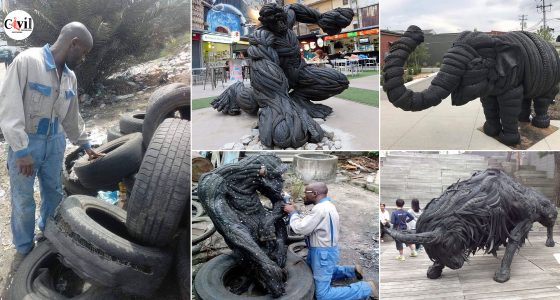Well, pretty much as the name suggests, it’s the drainage system that lives underground. The drainage system is formed from a mixture of lengths of pipe and fittings such as bends, junctions, and other fittings to either change the direction of the pipe or to adapt to another system. Underground drainage is generally referred to as the sewage system as it is predominately used to transport waste water (grey water) or foul water directly to the sewage treatment facility. This system can also be used for rainwater drainage into a soakaway system or water course.
Usually these days the systems are made from PVC. This is because PVC is a lightweight yet strong material that lasts a very long time and is relatively cheap to manufacture when compared to clay or concrete. Due to its lightweight, it’s also easier to install and it’s almost completely maintenance-free. The inner wall is smooth which aids the easy flow of the wastewater, and PVC actually has a better “flow rate” than clay or concrete.
It’s easy to spot an underground drainage system as it’ll be terracotta in color which is the industry standard for this system. Interestingly soil pipes and fittings are almost exactly the same, made from the same machines. The only difference is that these will be black, white, or grey in color and contain a UV additive to protect against sunlight discoloration.
Drainage System Terms:
- House sewer: A pipe that runs between the house drainage system and the public sewer or septic tank.
- House drain: The lowest part of a home drainage system, this pipe receives the discharge from soil, waste, and other drainage pipes, and then carries such discharge to the house sewer. The house drain ends just outside the front or foundation wall of the building and operates by gravity.
- Soil stack and pipe: Any line of pipe which carries the discharge of toilets. The term “stack” refers to the vertical runs of such piping.
- Waste stack and pipe: All pipes receiving the discharge of fixtures other than toilets. An indirect waste pipe does not connect directly with either the house drain or the soil or the waste stack, but usually ends over and above the overflow rim of the fixture that is water-supplied, trapped, and vented.
- Trap: Refers to a fitting or device constructed to prevent the passage of air or gas back through a pipe or fixture, without materially affecting the flow of sewage or wastewater.
- Vent piping: Provides ventilation to the drainage system and prevents trap siphonage and back pressure from clogging or contaminating the drainage system. The local ventilating pipe is a duct or pipe connected to the house side of a fixture or trap through which foul vapors may be removed from a room.
- Sub-house drain: Any portion of the drainage system which cannot drain by gravity but which still handles the disposal of waste sewage.
















































